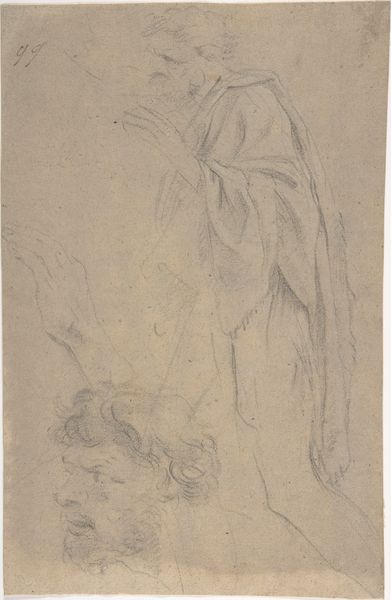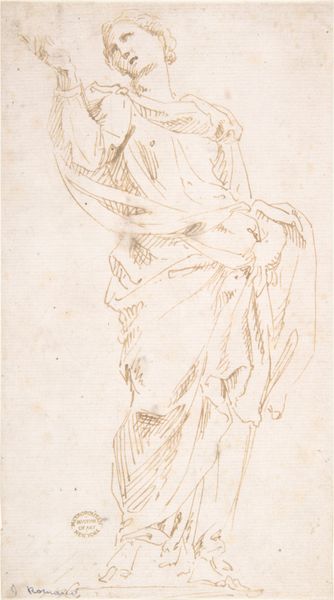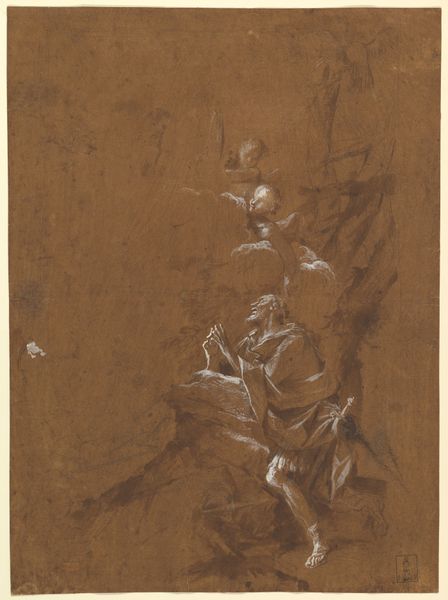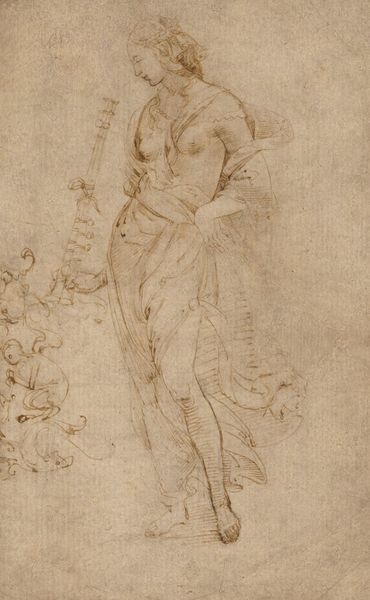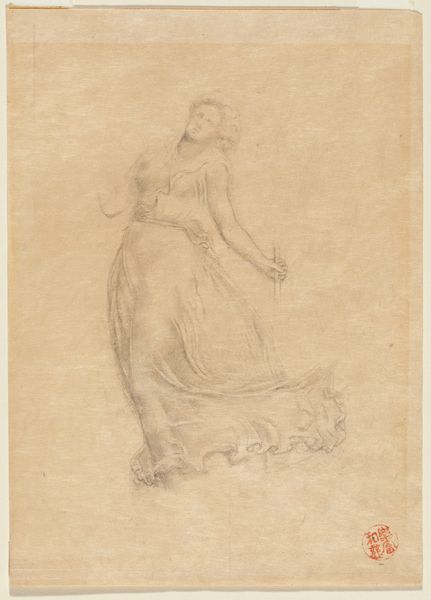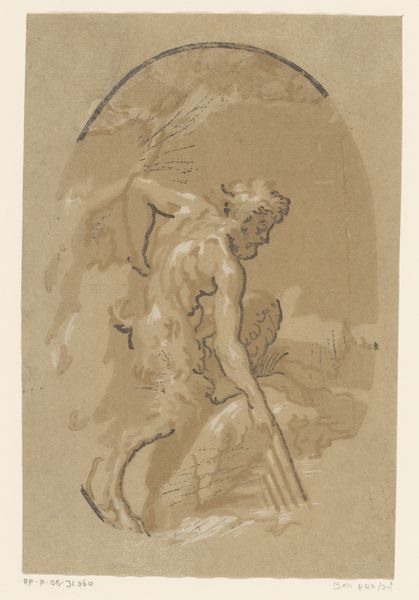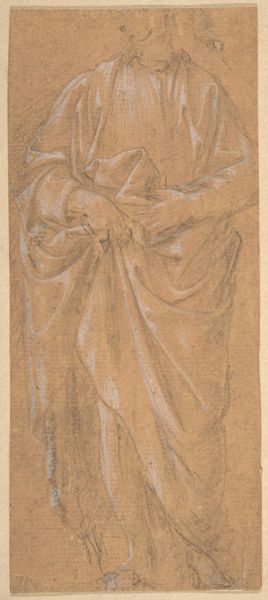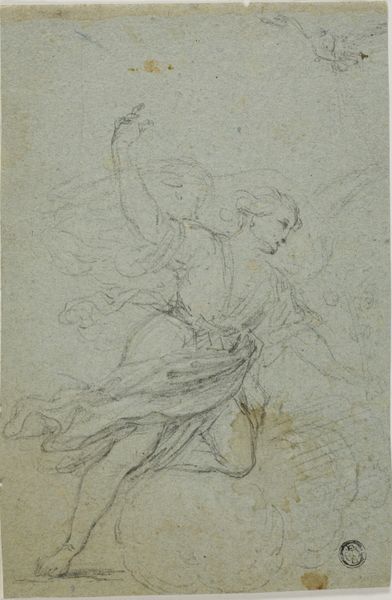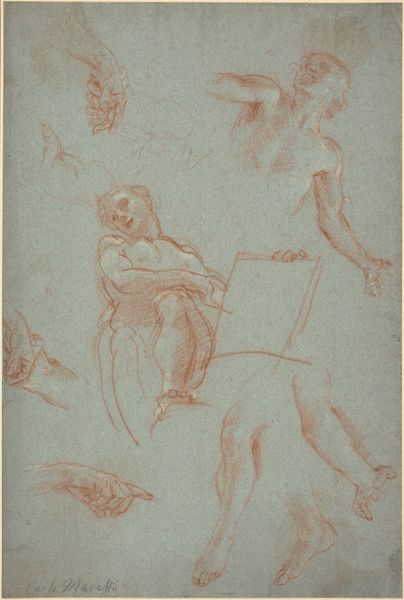
Rids af jordemoderen i "Pigen fra Andros", 1801 1798 - 1801
0:00
0:00
drawing, pencil
#
drawing
#
figuration
#
pencil
Dimensions: 251 mm (height) x 223 mm (width) (bladmaal)
Curator: Let’s turn our attention to this fascinating drawing by Nicolai Abildgaard, sketched between 1798 and 1801. It’s titled "Rids af jordemoderen i 'Pigen fra Andros,'" or "Sketch of the midwife in 'The Girl from Andros.'" Editor: Ooh, interesting! I get this feeling of barely-there existence, like a phantom. She's so light, almost floating, on this earthy-toned ground. I immediately wonder about the weight she carries, literally and figuratively, in this story. Curator: Well, let's consider the context. Abildgaard, working within the neoclassical movement, was deeply influenced by classical literature. “The Girl from Andros” is a play by Terence that engages with themes of societal expectations, gender roles, and morality in ancient Greece. Abildgaard focuses on the figure of the midwife, a traditionally female figure associated with both life and, perhaps, uncomfortable knowledge of the female body and childbirth. Editor: That adds a powerful layer! A midwife in this historical frame – a witness, a keeper of secrets related to reproduction and women's experience. There's something really ghostly about that role too. All that invisible labor, you know? It almost feels like Abildgaard captured her in a liminal state. She’s present but on the periphery. Curator: Precisely. And consider the medium itself: pencil on paper. This is a sketch, an ephemeral moment captured. This allows us, perhaps, to consider the ways in which the role of women involved in birth might have also been minimized, overlooked, or purposefully ignored. The fragility of the lines mirrors, perhaps, the precariousness of women’s lives and standing. Editor: Yeah, that's it! She's drawn so lightly, almost hesitant. But that arm raised, is it in supplication or triumph? I mean, bringing a baby into the world then… that’s intense, almost a rebellious act in some ways. And yet, a service. What contradictions, huh? I can see that Neoclassical feel in her pose, the classical drapery, yet there’s something about the flowing hair and energy that speaks of the human struggle involved, beyond an ideal. Curator: Ultimately, this small sketch really encourages us to delve deep into questions of gendered labor, female agency and the social structures framing art making, past and present. It becomes an intriguing conversation starter when thinking about power imbalances in society and within art historical canons. Editor: Totally! Who knew so much history and emotional impact could be packed into a few barely-there pencil lines? Really makes you appreciate the power of a sketch.
Comments
No comments
Be the first to comment and join the conversation on the ultimate creative platform.
